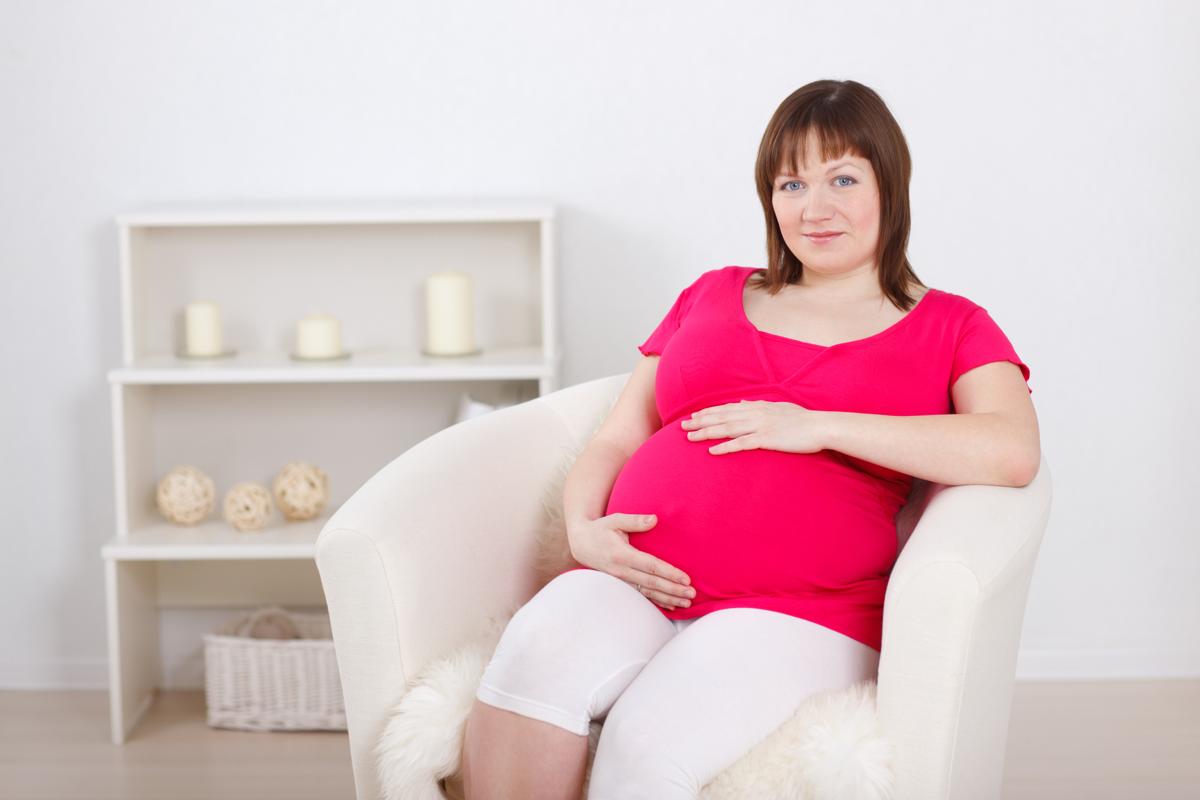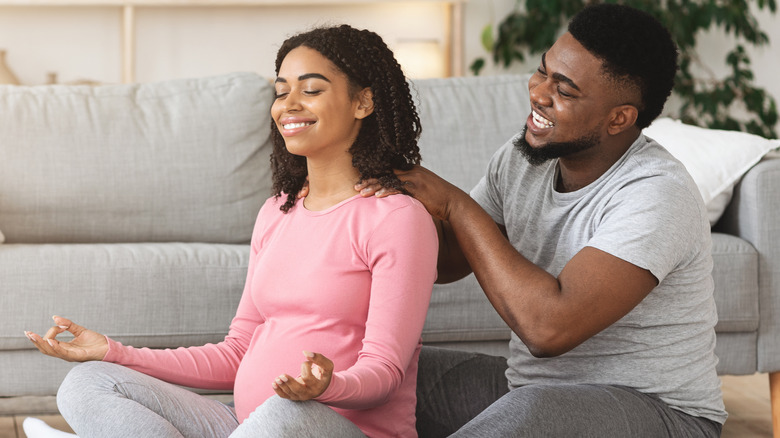Safety and Benefits of Chair Massage During Pregnancy: Can You Get A Chair Massage When Pregnant

Chair massage during pregnancy offers a gentle and effective way to address common discomforts and promote overall well-being. It involves applying pressure to specific points on the back, shoulders, and neck, using a specially designed chair that supports the pregnant woman’s body.
Benefits of Chair Massage During Pregnancy
Chair massage can provide numerous benefits for pregnant women, including:
- Stress Reduction: Pregnancy can be a stressful time, and massage can help reduce stress hormones like cortisol, promoting relaxation and improving mood.
- Improved Circulation: Massage can stimulate blood flow, which is essential for delivering oxygen and nutrients to the fetus and removing waste products.
- Pain Relief: Chair massage can alleviate common pregnancy discomforts such as back pain, sciatica, headaches, and muscle tension.
- Reduced Edema: Massage can help reduce swelling in the legs and feet, a common issue during pregnancy.
- Improved Sleep Quality: Massage can promote relaxation and improve sleep quality, which is essential for both the mother and the developing baby.
Safety Considerations for Chair Massage During Pregnancy
While chair massage is generally considered safe during pregnancy, it’s crucial to consult with a healthcare provider before receiving any massage therapy.
- Trimester Considerations: The safety of chair massage varies depending on the trimester. In the first trimester, massage is generally safe, but it’s essential to avoid deep pressure on the abdomen. In the second and third trimesters, massage can be more beneficial, but it’s important to avoid certain areas like the lower back and abdomen, as they can put pressure on the uterus.
- Potential Risks: Although rare, there are potential risks associated with massage during pregnancy. These include:
- Premature Labor: In some cases, massage can trigger premature labor, especially in women with a history of preterm birth.
- Increased Blood Flow: Massage can increase blood flow to the uterus, which could potentially be problematic in some cases.
- Bleeding: Massage can sometimes cause bleeding, particularly if the pregnant woman has a history of bleeding disorders.
- Contraindications: There are certain conditions that make chair massage contraindicated during pregnancy. These include:
- Premature Labor: Women at risk of premature labor should avoid massage.
- Placenta Previa: Women with placenta previa, a condition where the placenta covers the cervix, should avoid massage.
- Preeclampsia: Women with preeclampsia, a condition characterized by high blood pressure and protein in the urine, should avoid massage.
- Vaginal Bleeding: Women experiencing vaginal bleeding should avoid massage.
Specific Conditions and Chair Massage
Chair massage can be particularly beneficial for pregnant women experiencing certain conditions, such as:
- Back Pain: Massage can help relieve back pain by loosening tight muscles and improving circulation.
- Sciatica: Massage can alleviate sciatica pain by reducing inflammation and releasing pressure on the sciatic nerve.
- Edema: Massage can help reduce swelling in the legs and feet by promoting lymphatic drainage.
Finding a Qualified Massage Therapist
It’s crucial to find a qualified and experienced massage therapist who is trained in prenatal massage. Ask for recommendations from your healthcare provider or friends and family. Ensure the therapist is certified and insured.
Communication is Key
Before receiving a massage, be sure to communicate with your therapist about your pregnancy, any specific concerns you have, and any medications you are taking.
Finding a Qualified Massage Therapist

Choosing the right massage therapist is crucial when you’re pregnant. You want someone who understands the unique needs of your body during this time and can provide a safe and effective massage.
Experience in Prenatal Care
It’s essential to find a massage therapist who has experience working with pregnant women. They should be familiar with the changes your body goes through during pregnancy, the appropriate massage techniques, and any potential risks or contraindications.
Finding a Qualified Therapist
- Recommendations from Healthcare Providers: Your doctor, midwife, or other healthcare providers can often recommend massage therapists who specialize in prenatal care. They may have personal experience with these therapists or be aware of their qualifications and expertise.
- Online Directories: Websites like the American Massage Therapy Association (AMTA) and the National Certification Board for Therapeutic Massage & Bodywork (NCBTMB) offer directories of certified massage therapists. You can filter your search by location and specialty, including prenatal massage.
- Word-of-Mouth: Ask friends, family, or other pregnant women for recommendations. They may have had positive experiences with massage therapists who cater to prenatal needs.
Questions to Ask Potential Therapists
- Experience with Prenatal Massage: Ask about the therapist’s experience working with pregnant women. How many prenatal massages have they performed? What training have they received in prenatal massage techniques?
- Qualifications and Certifications: Inquire about the therapist’s qualifications and certifications. Are they licensed or certified by a reputable organization? What are their credentials?
- Safety Protocols: Ask about the therapist’s safety protocols for pregnant women. Do they use specific techniques or positions that are safe during pregnancy? Do they have any contraindications or precautions for prenatal massage?
- Communication and Collaboration: Discuss the therapist’s approach to communication and collaboration. Will they communicate with your healthcare provider about your pregnancy and any concerns you have? Do they have experience working with clients who have specific medical conditions or complications?
- Client Testimonials: Ask for client testimonials or reviews to get an idea of other pregnant women’s experiences with the therapist. This can provide valuable insights into their approach and effectiveness.
Chair Massage Techniques and Considerations

Chair massage techniques for pregnant women require careful adaptation to accommodate the changing body and ensure safety and comfort. Therapists need to be aware of the physiological changes occurring during pregnancy and adjust their techniques accordingly.
Adaptations for the Changing Body
The growing belly, hormonal changes, and increased weight distribution during pregnancy necessitate modifications in chair massage techniques. Therapists must be mindful of these changes to provide a safe and effective massage experience.
- Positioning: The client should be seated in a comfortable chair with proper support for the back and legs. Therapists may need to adjust the chair’s height and angle to accommodate the client’s growing belly. The client can be positioned with a pillow or bolster under the belly to provide additional support. The therapist should ensure that the client’s weight is evenly distributed and that there is no pressure on the uterus. The therapist can also use pillows to support the client’s head and arms for added comfort.
- Pressure: The therapist should use lighter pressure than usual, especially in the abdomen and lower back areas. This is because the muscles in these areas are more sensitive during pregnancy. The therapist should always ask the client about their preferred pressure level and adjust accordingly.
- Techniques: The therapist should avoid deep tissue techniques in the abdomen and lower back. Instead, they should focus on gentle strokes, kneading, and stretching techniques. Specific techniques that can be beneficial for pregnant women include:
- Swedish Massage: This technique uses long, flowing strokes to promote relaxation and improve circulation.
- Effleurage: This technique involves gentle, gliding strokes that can help to relieve muscle tension and improve lymphatic drainage.
- Petrissage: This technique involves kneading and rolling movements that can help to improve circulation and reduce muscle stiffness.
- Stretching: Gentle stretching techniques can help to relieve muscle tension and improve flexibility. Therapists should be careful to avoid any stretches that put pressure on the uterus or could cause discomfort.
Communication and Client Comfort
Open and clear communication between the therapist and the client is crucial for a safe and comfortable chair massage experience during pregnancy. The therapist should always ask the client about any concerns or discomforts they may have, especially related to their pregnancy. The therapist should also be prepared to explain the techniques they are using and to adjust them as needed based on the client’s feedback.
- Ask about any discomfort or limitations: The therapist should inquire about any specific areas where the client experiences discomfort or pain. This information is crucial for customizing the massage techniques and ensuring the client’s well-being.
- Explain the techniques used: The therapist should clearly explain the techniques they will be using, especially if the client is new to chair massage or has never experienced massage during pregnancy. This ensures the client feels informed and comfortable throughout the session.
- Maintain open communication throughout the session: The therapist should encourage the client to communicate any changes in comfort or sensations during the massage. This allows for immediate adjustments and ensures a safe and enjoyable experience.
- Seek feedback and make adjustments: The therapist should regularly seek feedback from the client about the pressure, techniques, and overall comfort level. Based on the client’s feedback, the therapist should be willing to adjust the massage techniques accordingly.
Essential Considerations for Chair Massage During Pregnancy, Can you get a chair massage when pregnant
The following table Artikels key considerations for providing chair massage during pregnancy:
| Factor | Considerations |
|---|---|
| Positioning | – Ensure adequate support for the back and legs. – Use pillows or bolsters to support the belly and provide comfort. – Avoid pressure on the uterus. – Adjust the chair height and angle as needed. |
| Pressure | – Use light to medium pressure, avoiding deep tissue techniques. – Ask the client about their preferred pressure level and adjust accordingly. – Be mindful of sensitive areas like the abdomen and lower back. |
| Duration | – Keep the massage session short, typically 15-30 minutes. – Avoid prolonged massage, especially in the later stages of pregnancy. – Observe the client’s comfort level and adjust the duration accordingly. |
| Techniques | – Focus on gentle strokes, kneading, and stretching techniques. – Avoid techniques that could put pressure on the uterus or cause discomfort. – Use Swedish massage, effleurage, petrissage, and gentle stretching techniques. |
| Communication | – Maintain open and clear communication with the client throughout the session. – Ask about any concerns, discomforts, or limitations. – Explain the techniques being used and seek feedback. – Be willing to adjust techniques based on the client’s feedback. |
Can you get a chair massage when pregnant – While chair massages can be a great way to relax, it’s important to consult with your doctor before receiving one during pregnancy. Some positions might not be safe, and the pressure applied can vary. If you’re looking for a relaxing way to soothe tired feet and legs, a massage chair with foot spa could be a good option.
It offers a gentle massage experience, promoting circulation and easing discomfort, which can be particularly helpful during pregnancy.
While chair massages can be relaxing, it’s important to consult with your doctor before receiving one during pregnancy. Some massage techniques might not be safe for expectant mothers. If you’re considering investing in a massage chair for home use, you might want to check out the infinity massage chair warranty for peace of mind.
After all, a good warranty can protect your investment and ensure you get the most out of your massage chair, even as your needs change throughout your pregnancy.